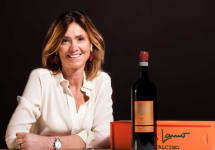Col di Lamo Brunello di Montalcino 2015
-
James
Suckling -
Robert
Parker -
Wine
Enthusiast



Product Details
Your Rating
Somm Note
Winemaker Notes
Red color of medium intensity, with purple reflections. Harmonious, with a sophisticated note of prune and blackberry and a strong wood aroma. The taste results in a rich and balanced wine, distinguished by its aftertaste with a note of mixed berries and a delicate nuance of wood.
Professional Ratings
-
James Suckling
This is a very pretty Brunello that shows fresh red cherries, strawberries, citrus, nutmeg, rose petals and cedar. Great combination of finesse and concentration. Silky tannins and chewy fruit are a winner. Full-bodied and powerful, yet agile.
-
Robert Parker's Wine Advocate
The Col di Lamo 2015 Brunello di Montalcino is a standout wine that offers a great balance of dark fruit and savory spice. It is fruit-forward, but it hits all the classic Brunello selling points. It shows emphasis on the dark side of the wine (with black cherry, black currant and plum) that is very much in line with this vintage. You might get a hint of ripeness too, with some blackberry preserves and cherry confit, but despite that more overt softness, the wine fully shows the elegance of the vintage. It's a great effort for organic farming.
-
Wine Enthusiast
This offers aromas of dark-skinned berry, tilled soil and a whiff of new leather. The savory, balanced palate delivers dried black cherry, staranise and tobacco alongside firm, youthfully austere tannins. Drink after 2023
Other Vintages
2018-
James
Suckling - Decanter
-
Robert
Parker
-
James
Suckling
-
James
Suckling -
Jeb
Dunnuck - Decanter
-
James
Suckling -
Robert
Parker




The commercial farm Col di Lamo extends up to eight hectares in the territory of Montalcino. The property owner, Giovanna Neri, graduated in Law, got her passion for wine from her father and she is actually one of the most successful and valued winemakers. One of the most fascinating aspects of Col di Lamo wines is the ability of Giovanna to spread love and respect her products in the same way as a woman, a mother, loves her son. That is how she considers her “creations”: the Red Wine of Montalcino, Brunello of Montalcino, Lamo and Eau-de-vie are the result of a winemaking process firsthand that Giovanna’s father taught her daughter. Col di Lamo’s label has been creatively studied with the aim of showing the feminine touch: the delicate profile of a woman’s face and the colours orange and green of Lamo represent the image that Giovanna decided to give to her wine cellar and to her products.
